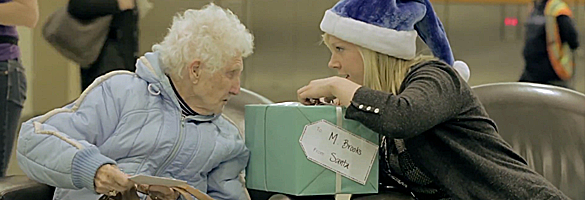Remember when disgruntled United Airlines passenger David Carroll took the airline to task via YouTube when his beloved guitar was broken in transit? His catchy musical retort to being denied compensation, ‘United Breaks Guitars’, generated nearly 13.8 million views and a flurry of parody responses.
Perhaps it was the reach of Carroll’s viral hit that made the airlines take notice – who knows – but video content has undoubtedly become an increasingly important part of travel marketing activity. Indeed, according to a new report, video is rapidly surpassing television as the most effective channel for airlines to target a young travelling demographic.
Travel intelligence company Skift.com has revealed that video marketing is more important for airlines than most travel-related businesses – and as a result airlines are among the most successful producers of video marketing in the travel sector. In this blog post, we run through the pick of effective video campaigns from airlines, examining what lessons we can apply to marketing in other sectors.
You’ll probably be familiar with some of the high profile examples of airline video marketing. Over Christmas, Turkish Airlines ran its popular Kobe vs Messi campaign, The Selfie Shooutout. Featuring the two famous athletes trying to one-up each other by snapping selfies at famous landmarks across the globe, the ads translated seamlessly to YouTube where they have generated 138.8 million views – yet no bespoke YouTube content here, just a repurposed TV spot.
Elsewhere, the traditionally boring in-flight safety video has become an opportunity for airlines to differentiate and brand themselves . Air New Zealand did just this with its 2012 four-minute safety epic, ‘An Unexpected Briefing’.
Coinciding with the release of The Hobbit, the viral featured a cast of elves, dwarves, wizards, the Gollum and even director Peter Jackson. In this instance, video was a key component of a wider campaign which saw the carrier rebrand itself as “the Airline of Middle Earth”. Virgin America also picked up on the trend for reinventing the safety video format with its Safety Dance, spawning another viral YouTube hit. Both examples demonstrate clever use of bespoke video marketing content.
Differentiation is key to airlines in a highly commoditised market, and this is where video becomes a crucial element of branding strategy. As Rob Ciampa, CMO of Pixability explains in the Skift report:
“The airline industry is very commoditised ….people shop for the lowest prices….but when we find fares that are pretty close, how do we choose? This is where brand matters. What is it about the brand, the aircraft, where they fly? What about the company’s philosophy? This is where exciting, unique and sharable videos come into play.”
A prime example is Canadian low-cost airline West Jet’s Christmas video campaign, the WestJet Christmas Miracle.
By capturing on film the moment that passengers were surprised at Calgary Airport with their Christmas wishes, WestJet forged strong emotional connections with its audience. The video went viral, attracting some 35.5 million views on YouTube – proof that an idea that resonates on a human level can build effective and shareable campaigns, without breaking budgets.
It’s fantastic to see airlines taking to YouTube to build their brands online – particularly those that think beyond merely repurposing TV ads. By consistently creating great video content that attracts viewers to return to their channels, airlines and indeed any business can build a more engaging online identity.

